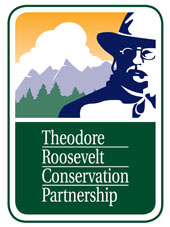As federal listing deadline approaches for the range-wide population of the birds, sportsmen urge coordinated conservation efforts


Washington, DC -(Ammoland.com)- As 11 Western states anxiously await the end of September, when the U.S. Fish and Wildlife Service will decide whether to list the range-wide population of greater sage-grouse under the Endangered Species Act (ESA), good news has emerged from Nevada and California.
Today, the agency determined that a smaller population of the majestic western gamebird isolated to these two states was not warranted for listing under the ESA, indicating that, with concerted conservation efforts, a federal listing may be avoided. The decision comes after months of proactively planning a combination of regulatory and voluntary measures on federal, state, and private land to assure the birds’ future.
“Today’s decision is great news for this population of sage-grouse and all the stakeholders who rolled up their sleeves and demonstrated that the states can work with the federal government to achieve a positive outcome,” says Miles Moretti, president and CEO of the Mule Deer Foundation. “We’re poised to get the same result for the remaining populations of sage-grouse, if we stay the course and don’t back away from strong conservation efforts that will benefit all sagebrush-dependent species.”
The Service must decide whether to list the broader, range-wide population by September 30, 2015. Sagebrush ecosystems that support sage-grouse are also critically important to more than 350 species of plants and animals, including mule deer, pronghorns, and elk.
“The same regulatory assurances and proactive voluntary measures that have helped prevent the listing of this bi-state population are exactly what we need in the rest of the sage-grouse’s range,” says Steve Williams, president of the Wildlife Management Institute and former director of the U.S. Fish and Wildlife Service. “Ultimately, the decision to list the range-wide population will end up in a federal court, and unless the state and BLM plans and assurances can be defended by the Service, a judge may rule that the sage-grouse must be listed,” Williams adds.
Nearly half of the nation’s remaining sagebrush habitat lies on federal public lands administered by the Bureau of Land Management, and conservation measures in that agency’s new resource management plans will likely carry a lot of weight in the September 2015 decision. Private and state lands, however, are also vital to the birds’ future, and the ESA listing decision will hinge on strong state conservation plans.
“Governors simply cannot take their foot off the gas now,” says Whit Fosburgh, president and CEO of the TRCP. “They must finalize solid plans for their states and support federal plans in order to avoid a listing later this fall. We need their leadership to embrace change, conservation, and a newly defined future for sagebrush ecosystems.”
Policy makers in Washington enacted a rider in the recently passed budget bill stating that FWS cannot “write or issue” listing rules for four grouse species, and new bills are being developed to propose delaying a listing decision by 6 to 10 years.
“Politicians seeking to drag out the September 2015 deadline for listing greater sage-grouse were sent a strong message today—putting in the hard work now will pay off in the long run,” says Fosburgh. “The necessary assurances for state and federal plans don’t require 6 to 10 years to result in a positive outcome. By buckling down, stakeholders in California and Nevada have shown us a path forward for the rest of the western states.”
About Theodore Roosevelt Conservation Partnership
Inspired by the legacy of Theodore Roosevelt, the TRCP is a coalition of organizations and grassroots partners working together to preserve the traditions of hunting and fishing.
For more information on the TRCP, please visit our website at www.TRCP.org.
